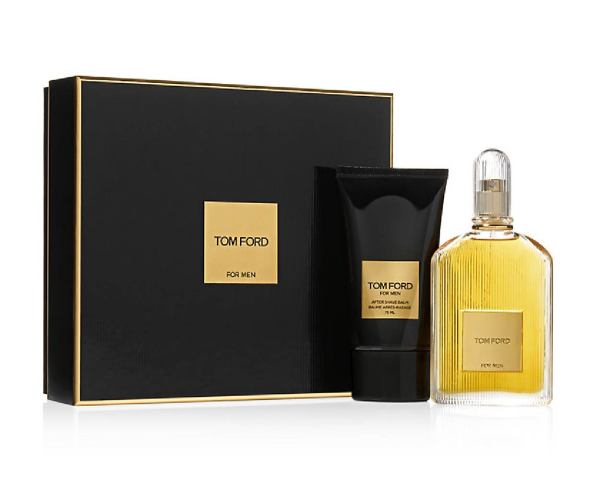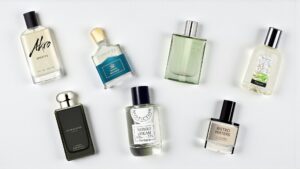We underestimate how crucial our scent is in the scheme of things. Your scent is essentially an invisible extension of your personality. And like first impressions, it has the ability to linger, as well as persuade others of certain opinions regarding the you in it all. Here is the ultimate beginner’s guide to fragrances for men.
What is a fragrance?
Strictly speaking, fragrances are an intricate mixture of raw materials. These raw materials are extracted from synthetics or organics. The perfumed oils made from this are then dissolved in a solvent in order to preserve the smell, the solvent usually being alcohol. The higher the oil concentration, the stronger the fragrance. And the strength determines the longevity of the smell once applied to your skin.
Here’s the tricky part. Scents will react to different people differently. How it hits the nose once it mingles with your natural body scent. How long it stays with you. Etc. So while what you’re about to read serves as a solid guide, do keep in mind it is only just that. A guide. You may be required to experiment and take note of certain things to get it just right.
Fragrance, cologne, aftershave?
There are many terms thrown around in this area of grooming. Here’s what you need to know about what each entails:
Aftershave or Eau Fraiche
The most diluted fragrance, around 1% to 3% perfume oil in water and alcohol. A spray of this usually disappears in under an hour.
Cologne or Eau de Cologne
The oldest term for fragrance/perfume, predominantly used in North America for masculine scents. Light and refreshing, maybe even a hint of tropical. Cologne usually has 2% to 4% perfume oil in water and alcohol. A spray of this generally lasts for two hours.
Toilette or Eau de Toilette
“A light spray composition…” with 5% to 15% pure perfume essence in alcohol. A spray of this generally lasts for three hours.
Perfume or Eau de Parfum
Unisex term for describing a fragrance. A standard perfume is composed of 15% to 20% pure perfume essence, and generally has a lifespan of five to eight hours.
Parfum
Bastardisation of the Latin phrase “per fumum”, which translates to “through smoke”. Parfum is the most concentrated, and often the most expensive of all the fragrances. This one is oilier than the rest with a 20% to 30% composition of pure perfume essence. But also the ones with the most endurance, as a single spritz can carry through to a full day. Twenty-four full hours.
Related:

Head, heart, & base notes
A fragrance can be termed in these three notes.
Head
This is what is used to describe the initial impression of the scent. It is comprised of the smaller and more lighter molecules. This introduction is usually fresh and citrusy, also known as “green notes”; your lemon and limes, lavenders, neroli etc. The head lasts around fifteen minutes to two hours.
Heart
The heavier and more full-bodied molecules, this one takes anywhere between a few minutes to an hour to really come out. It may often blend in with the head note to form a base. The heart lasts three to five hours.
Base
The heaviest molecules. This is, as its name indicates, the fundamental layer that allows for the full depth of a scent to come out. This is the headliner. The meat and potatoes. Your musks, resins, woods. This element generally comes out around half an hour, and tends to last between five to ten hours.
Linear & non-linear: the cycles of a scent
Fragrances that smell the same throughout their entire lifecycle are known as linear fragrances. But then there are those that are more complex, and evolve with the layers within themselves over time. These fragrances are known as non-linear. And while quality fragrances are generally non-linear, not all linear fragrances are cheap and low quality. Linear fragrances serve a definite purpose for those after continuity instead of evolution.
Price points & maintenance
In terms of pricing, there are two categories fragrances can be divided into. Designer and niche.
Designer fragrances and what most stores stock. Ones of well known brands like Chanel. They are mass produced for mass consumption, thus being safer. Safer, in this case, meaning inoffensive, and not likely to elicit strong reactions. The downside of this is that it probably means whatever you get in the bottle is made from cheaper materials. These usually retail at a range of $20 to $200 a bottle.
Niche fragrances are the more expensive kind made from higher quality materials. Their target audience is more selective than designer scents, which gives this kind the freedom to take more risks in the formulation of it. Something that will get a stronger reaction. These usually retail at a starting point of around $50, moving up to several hundreds.

Important: paying more doesn’t mean what you’re getting is better.
Make sure you are paying for the raw materials that make up the oil concentrate and not the marketing cost of something popular. Even more importantly, choose something that feels right on you. There’s no point in throwing money at a scent that you think others might like but you can’t stand yourself.
Once you have decided on a bottle, store it away somewhere cool, dry, and preferably dark. Sunlight will deteriorate a fragrance, as will regularly changing temperatures. So keep them away from windows and bathroom shelves. That being said, abiding by these simple suggestions will not make it last forever either. But it will extend its life.
Rules of engagement: the etiquette in application
- A scent should be discovered, not announced:
Start light, no one wants to be overwhelming. Spray on dry skin when you are clean about ten or so centimetres away from the surface. - Respect the scent:
Common sense dictates that you should rub it into the skin– don’t do that. This weakens it by breaking the molecular bond of the mixture, effectively killing the notes. Don’t spray it on your clothes either. Fragrances are designed to mingle with your natural scent, doing so will also stain. Don’t splash it on yourself, it’s an excessive waste. And for God’s sake, don’t spray and walk. Most of it won’t bind to your body, and end up everywhere but. - Apply to heat areas:
Your natural body heat will diffuse the scent throughout the day. Start with one, then progress to two to three once you are more familiar with the scent. Hot spots include the neck, jaw, wrist, armpit, inner elbow. Stay away from the crotch. I know some of you will be tempted, but just don’t unless you want the fiery sensation of an STI.
















